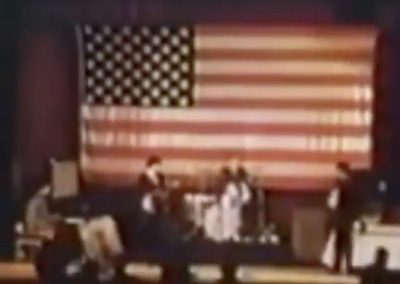Eat the Document opens with a shot of Bob Dylan snorting something off a tabletop then asking, "Have you ever heard of me?”
An ego indulging itself is an appropriate introduction to this film. 🧵
An ego indulging itself is an appropriate introduction to this film. 🧵

Eat the Document reunites Dylan with Dont Look Back director D.A. Pennebaker, who had free rein to capture that 1965 UK tour.
But for the following year’s return to Europe, Dylan wanted more control over the filmmaking process.
But for the following year’s return to Europe, Dylan wanted more control over the filmmaking process.

Though Pennebaker shot most of the footage, it was often under Dylan’s direction.
Rather than quietly capturing real events, Dylan wanted to stage certain scenes, like (I suspect) this inane moment of a plate being passed around a restaurant table.
Rather than quietly capturing real events, Dylan wanted to stage certain scenes, like (I suspect) this inane moment of a plate being passed around a restaurant table.
Pennebaker did a rough edit of the footage but Dylan decided that it was too similar to Dont Look Back.
The singer worked on his own cut during his post-motorcycle crash stint out of the public eye in Woodstock, with help from his friend and filmmaker Howard Alk.
The singer worked on his own cut during his post-motorcycle crash stint out of the public eye in Woodstock, with help from his friend and filmmaker Howard Alk.

A co-founder of the legendary Second City improv theatre group, Alk had booked Dylan for one his first Chicago live shows in 1962.
He then moved into film, helping Murray Lerner to edit the Newport documentary, Festival, before assisting Pennebaker on Dont Look Back.
He then moved into film, helping Murray Lerner to edit the Newport documentary, Festival, before assisting Pennebaker on Dont Look Back.

But Pennebaker had little interest in Alk’s ideas about filmmaking.
Once it became clear that Alk was leading the direction of Eat the Document’s latest edit, Pennebaker quit the project.
Once it became clear that Alk was leading the direction of Eat the Document’s latest edit, Pennebaker quit the project.
While Dont Look Back notably put you in the middle of a scene without providing context, the action and editing allowed you to start making sense of things.
Alk’s idea was to remove even that, instead gives the viewer mere fragments of events, including the music.
Alk’s idea was to remove even that, instead gives the viewer mere fragments of events, including the music.
In 1965, Pennebaker was more interested in the off-stage antics than Dylan’s live performances. But he understood that in 1966, the action was most definitely happening onstage.
Yet Alk and Dylan’s final edit of Edit the Document hardly reflects that.
Yet Alk and Dylan’s final edit of Edit the Document hardly reflects that.

The first live performance we see is Tell Me Momma, played against the backdrop of a large American flag.
Yet this short scene fails to convey the noise and intensity of the electric set's wild opening song that you get from the live audio recordings.
Yet this short scene fails to convey the noise and intensity of the electric set's wild opening song that you get from the live audio recordings.

Later, footage of Tom Thumb’s Blues is interrupted by a “conversation” between Dylan and a mute Robbie Robertson.
Then we follow the duo as they wander aimlessly through some waste ground.
Then we follow the duo as they wander aimlessly through some waste ground.

The show-stopping climax of the live shows, Like a Rolling Stone comes early in Eat the Document.
We only hear the first couple of lines before another sudden cut to those infamous reactions from fans – though the film seems more interested in their faces than words.
We only hear the first couple of lines before another sudden cut to those infamous reactions from fans – though the film seems more interested in their faces than words.

The best live footage is of Ballad of Thin Man, whose centrepiece presence suggests that the song has become Dylan’s definite statement about the world as he was currently experiencing it.
After staying close-up on the singer for a mesmerising minute, the film inevitably cuts away to a strained conversation with a French journalist.
When it returns to Thin Man, we see Dylan from a distance, before cutting again to critics, this time more outraged British fans.
When it returns to Thin Man, we see Dylan from a distance, before cutting again to critics, this time more outraged British fans.

Next is a funny juxtaposition of hearing Dylan singing a mighty “ahhh” while the scene cuts to footage of him yawning.
This is the most coherent section of Eat the Document, where its compulsive edits and fractured narratives are used to describe Dylan’s discombobulation.
This is the most coherent section of Eat the Document, where its compulsive edits and fractured narratives are used to describe Dylan’s discombobulation.

It may be unfair to criticise Eat the Document for not focusing enough on the music when Dont Look Back did the same.
But the latter made up for it with a great cast of characters. Join me tomorrow to see if Eat the Document has enough personality.
Image via @batcountry1980
But the latter made up for it with a great cast of characters. Join me tomorrow to see if Eat the Document has enough personality.
Image via @batcountry1980

• • •
Missing some Tweet in this thread? You can try to
force a refresh














